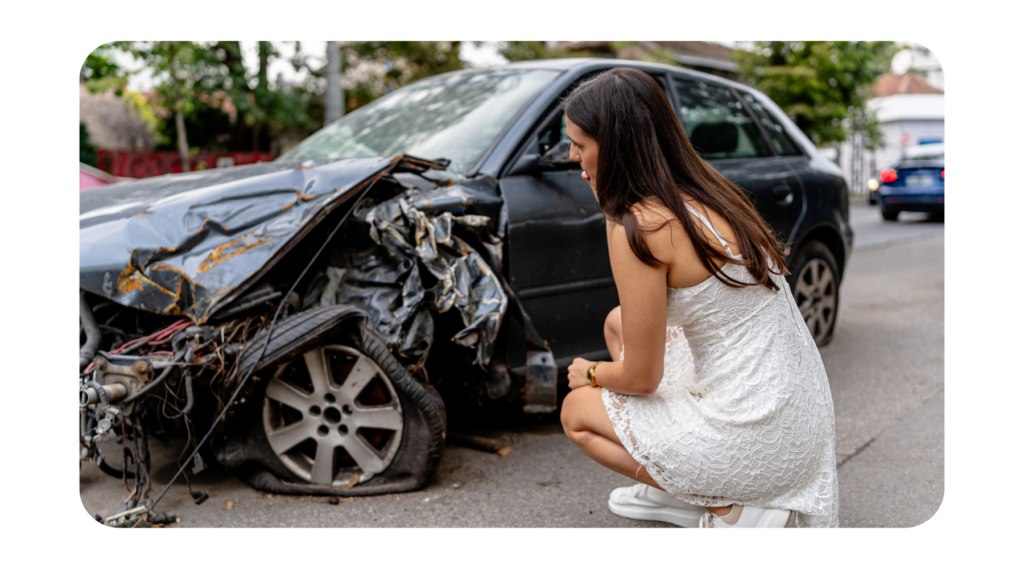What to Do After a Hit-and-Run Accident
Being involved in a hit-and-run accident can feel like your world has turned upside down in an instant. On top of the physical damage or injuries that shake you up, there is also the emotional rollercoaster—fear, anger, confusion—all hitting at once. After such an event, figuring out what to do next is pivotal to protecting yourself and your rights.
Let’s break it down step by step with practical advice on what to do right after the accident, how the legal side works, and why getting a lawyer involved might be the smartest move you can make. The more you know, the more control you have over what happens next.
What is a Hit-and-Run in California?

In California, a hit-and-run happens when a driver leaves the scene without giving their info—whether they hit another car, a person, or a piece of property. Regardless of what was hit, hit-and-runs are a serious crime, and offenders face steep penalties, including fines, losing their license, and even jail time. As a victim, knowing this helps underline the importance of taking the right steps to secure justice.
What to Do Right After
Imagine you’re a recent victim of a hit-and-run. What do you do? It’s easy to forget when you’re in shock, so here’s a breakdown of the most important steps.
1. Ensure Your Safety and Call 911
First, get to safety. Move your car off the road if you can, or get to the side of the street if you’re on foot. Then, call 911. Even if you think the offending driver is long gone, give as much detail as you can about the car or the direction it went in. Every bit of info you can remember can potentially help the police later.
2. Gather Evidence
While waiting for help, take photos—of the damage, the scene, anything that might be useful. If there are witnesses, ask for their contact information. Their perspective could be critical for backing up your claim.
3. Get Medical Attention
Even if you feel okay, seek medical attention from a doctor. Injuries like whiplash or internal damage can take time to show up. Plus, medical documentation can help strengthen your case later if you seek compensation.
4. Report the Incident to the Police
File a police report as soon as you can, preferably within 24 hours. It’s an official record of the hit-and-run and something your insurance company will ask for when processing your claim.
Compensation After a Hit-and-Run Accident
After a hit-and-run, you might be wondering, “Who’s going to pay for all this?” This is where it can get complicated, especially if the other driver isn’t caught.
Filing a Claim and Your Insurance Policy
If the at-fault driver remains unknown, your insurance company and policy become key factors in determining what you are covered for. If you have uninsured motorist coverage, for example, it may cover medical bills and damages, even if the hit-and-run driver is never found. The details of what your policy covers will vary, so it’s worth reviewing the fine print.
Remember, insurance companies are businesses, and their goal is to minimize payouts. They might try to downplay your injuries or offer a low settlement. Having a lawyer to advocate for you can help make sure you aren’t left shortchanged.
Protecting Your Rights After the Accident
Once the dust settles, protecting your rights becomes the priority. Insurance adjusters might seem friendly, but they work for the company, not for you. Be careful what you say, and don’t agree to any settlements without talking to a lawyer first.
Keep detailed records of everything related to the accident: medical bills, car repair costs, and days missed from work. Even non-economic factors like pain and suffering should be documented. All of this can help build a strong case for compensation.
Types of Compensation You Might Get
Compensation typically falls into two categories: economic and non-economic damages. Economic damages are the easy-to-calculate ones—medical bills, lost wages, and repairs. Non-economic damages cover things like pain and suffering or emotional distress. A good lawyer will fight to make sure you get what’s fair for both.
Do You Need a Lawyer?
If you’re wondering whether you really need a lawyer, the answer is usually yes. Navigating a hit-and-run claim can be tricky, and having an experienced lawyer on your side can make a big difference. A hit-and-run lawyer knows what evidence is needed and how to deal with insurance companies that may try to offer a lowball settlement. They’ll fight to get you the compensation you deserve and ensure your rights are protected.
Seeking Justice with LMS Law
Recovering from a hit-and-run isn’t only about repairing your car or healing your injuries—it’s about getting justice. The process can feel burdensome, but knowing what to do and getting the right legal help can make a big difference. A hit-and-run lawyer will guide you through the process, ensuring your rights are protected and that you receive the compensation you deserve.
If you are seeking experienced legal assistance in pursuing a hit-and-run case, LMS Law is here to help. We offer free case reviews to help you focus on healing while we fight for your rights. Contact us today at (415) 400–7000, or reach out online to arrange a free consultation. We can meet you at your home or in the hospital if you are unable to come to us.
The above is not meant to be legal advice, and every case is different. Feel free to reach out to us at LMS Law if you have any questions. Information contained in this content and website should not be relied on as legal advice. You should consult an attorney for advice on your specific situation.
Visiting this site or relying on information gleaned from the site does not create an attorney-client relationship. The content on this website is the property of LMS Law and may not be used without the written consent thereof.








